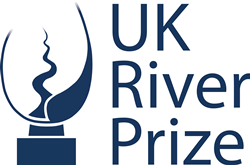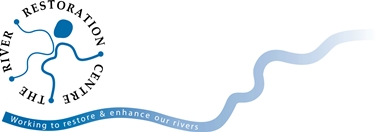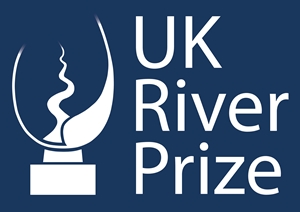UK River Prize > 2023 UK River Prize
 |
Congratulations to the 2023 Winners! |
| 2023 UK River Prize | |
|
The UK River Prize celebrates the achievements those individuals and organisations working to improve the natural functioning and ecological integrity of our rivers and catchments, and recognises the global benefits to society of a healthy natural environment. It is a collaboration across England, Wales, Scotland and Northern Ireland to celebrate best practice across the four countries. The UK River Prize is awarded by the River Restoration Centre (RRC). It is judged by a panel of UK experts. The UK River Prize winners will be announced on 19th April 2023 at the UK River Prize Awards Dinner, in association with the RRC Annual Network Conference in Birmingham. |
|
|
2023 UK River Prize Winners |
| Winner of the Catchment-scale award | |||
| River Trent, England - 'Staffordshire Trent Valley' | |||
| Lead: Staffordshire Wildlife Trust & Environment Agency | |||
|
The Staffordshire Trent Valley covers the mainstem of the River Trent from its source at Biddulph Moor, through Stoke-on-Trent all the way to the confluence with the River Dove just downstream of Burton-upon-Trent. It includes all the tributaries and catchments including the Sow, Penk, Blithe, Tean, Manifold and the parts of the Tame, Mease SAC, Anker and Dove systems within Staffordshire. |
 |
||
| The genesis of this project was the UK Biodiversity Action Plan process; a local partnership was established to produce (species and) habitat action plans in 1998. For Staffordshire, this included rivers and streams. Biodiversity audits undertaken at the time, together with subsequent catchment assessments and the Environment Agency’s data (including River Habitat Data), concluded that over 85% of rivers and streams had been heavily modified and were disconnected from their traditional floodplains. Ambitious restoration targets were agreed. | |||
|
In 2003 the LBAP targets for rivers were largely superceded by the Water Framework Directive’s ‘Good Ecological Status’ for all ‘waterbodies’. We now fully endorse the UN 30 by 30 Convention on Biological Diversity. Between 2006 and 2018 a series of opportunity mapping & biodiversity audits were carried out for the Staffordshire Trent Valley involving a mixture of walkover surveys, aerial photography and a compilation of existing information including EA data and an analysis of historic maps highlighting where evidence of habitat complexity was evident in the past. Reaches with recovering river habitat diversity were used as ‘reference conditions’ to help inform and inspire our restoration plans and interventions. In order to adhere to aspirations to undertake ‘process-led’ restoration work, we work with science teams comprising of fluvial geomorphologists from consultancies and universities. Their input is crucial to the final designs and interventions that are undertaken to ‘trigger’ dynamic natural processes. Once the baseline geomorphological audits are secured it is then possible to undertake repeat surveys to assess the effectiveness of our interventions. The same approach is used for our ecological monitoring: baseline surveys for ‘indicator species’ are carried out in partnership with The Wild Trout Trust, Natural England and consultant biologists and repeated post project delivery. |
|||
| Find out more |
| Winner of the reach-scale award | |||
| Rottal Burn, River South Esk, Angus, Scotland - 'Restoring the Rottal Burn' | |||
| Lead: River South Esk Catchment Partnership Partners: Esk Rivers & Fisheries Trust, Abertay University |
|||
|
The Rottal Burn is a tributary of the River South Esk in Glen Clova, Eastern Scotland, with headwaters in Cairngorms National Park. The project described here is an unconfined re-meandering of the lower part of the burn from where it flows under the B955 road bridge around 1km southwest of Rottal Lodge to the confluence with the River South Esk. The lower burn was straightened around the 1830s for agricultural reasons and was subjected to regular dredging. While salmon and trout continued to spawn in the straightened section of river, survival of juvenile fish was poor, and salmonid nests, called ‘redds’ were frequently washed-out during winter floods. |
 |
||
| To restore the Rottal Burn, a new channel was created in 2012, replacing 650m of straightened, embankment-lined channel with an open, meandering channel extended to 1200m in length and now connected to its floodplain. The restoration design was process-based rather than focusing on creating individual habitat features. | |||
|
The construction works were designed to create the restored channel without any import or export of material, which required careful planning through the design and the construction phase. The existing gravel embankments were used to provide material for the bed of the new channel and excavated material was used in landscaping and infill of the diverted channel. Sections of the restoration included large woody debris in the form of trees with rootballs sourced from wind-blown Scots Pine from the local estate. Trees were planted in 2012 along much of the new channel in 2012, using native broadleaf and pine trees. The riparian zone of the new channel has not been used by grazing by the estate, and there has been significant natural regeneration, mainly alder, in the area. The restoration aimed to restore natural river processes and in-stream and riparian habitat, particularly for the Atlantic salmon, trout, and freshwater pearl mussel. The unconfined restoration did not ‘lock’ the channel in place, it was expected that it would remain active and change naturally over time, developing gravel bars, pools and local bank erosion. The freedom to evolve has resulted in improvements in terrestrial habitats such as wetlands, riverbank habitat e.g. sand martin nesting opportunities and shingle islands. The botanical interest of the site has increased greatly, and invertebrate/pollinators are anecdotal greater in number. The project continues to evolve, and ecological monitoring of these wider terrestrial species is planned. |
|||
| Find out more | |||
|
2023 UK River Prize Finalists |
|
| River Kent, Cumbria, England - 'Bowston weir removal project' | |
|
Lead: South Cumbria Rivers Trust |
|
|
Bowston weir was located on the River Kent 150m upstream of Bowston Bridge, Kendal, Cumbria. Built upon a bedrock pinch point, it was approximately 37m wide and 3m high. Our research suggests that the weir was constructed in 1874 to provide water for Bowston Mill, which prepared rope and rags for local paper mills. It became redundant in the 1960s following the closure of Bowston Mill. 150+ years of human modifications on the river, multiple weir structures, in addition to embankments and river straightening, have severely impacted natural river processes. Consequently, many channel reaches lack the physical features and associated habitats that would occur naturally without these constraints and many River Kent SSSI units are now in unfavourable condition. |
 |
| As a result of these anthropogenic alterations a reach by reach scale fluvial audit of the River Kent and its tributaries was commissioned by Natural England in 2010. In follow up, Natural England (in 2014) commissioned an audit of fourteen weirs on the main River Kent to obtain an assessment of impacts on natural river function and ecology. The results of this audit identified Bowston weir among a list of weirs to be considered as priority for further investigation, and in 2016 South Cumbria Rivers Trust (SCRT) commissioned a feasibility and options appraisal to focus on Bowston weir. In conclusion, only a full removal of the weir would achieve the objectives that we sought for this reach. | |
|
The first objective was to enhance the habitat for fish, invertebrates, and other aquatic life that had been impeded by the weir and to allow the free movement of fish and other aquatic species. Also to contribute to a potential improvement in the “Unfavourable” status of the SSSI river unit in which it sits. The second objective was to improve the resilience of the river to future flooding events. The weir had caused sediment build-up and erosion, which increased the risk of flooding during periods of heavy rainfall. The removal of the weir was intended to allow the river to better manage high water levels and prevent future flood damage. Bowston weir was removed during June and July 2022 with aims to improve the ecological health of the River Kent while also reducing the risk of flooding for local communities and continues to be monitored closely. The project was an important step towards a more sustainable and resilient future for the region. |
|
| Find out more | |
| River Severn - Gloucestershire, Worcestershire & Shropshire, England - 'Unlocking the Severn' | ||
| Lead: Canal & River Trust Partners: Environment Agency, Natural England, Severn Rivers Trust |
||
|
Unlocking the Severn has been a once in a lifetime river restoration project, restoring connectivity for migratory fish on the UK’s longest river, providing ground-breaking insights into a little-known species, and engaging thousands of people with the fascinating natural, cultural, and industrial heritage of the Severn. The twaite shad were once seen migrating upstream in their hundreds of thousands each May and were a cornerstone of local communities. However, they became separated from their natural spawning grounds by the construction of navigation weirs in the 1840s, barriers which severed migration routes and sent the population into chronic decline. |
 |
|
| The construction of four major fish passes on the river Severn and two easements on the Teme has unlocked 253km of habitat for shad and other migratory fish for the first time in 180 years, and monitoring results from 2022 proved that shad had successfully navigated all four passes. | ||
|
Ground-breaking scientific work has provided new insights and significantly increased understanding and knowledge of the twaite shad. Development of a method to tag shad, the first time this has been done in the UK, resulted in over 300 fish being tagged. Environmental DNA was used to trace shad, another first in the UK, and has proved passage beyond the previous barriers. Diglis fish pass also includes an underwater viewing gallery, the first of its kind in England and Wales. Monitoring cameras here have recorded 25 different species of fish using the pass, and this unique space provides a valuable tool for education and community engagement. Our unique findings and new science continue to be disseminated through a newly established network, facilitating greater knowledge exchange, and contributing to the long-term management of shad and other protected species. Unlocking the Severn is already helping to inspire and inform other restoration projects across Europe and providing a blueprint for the powerful combination of engineering, conservation, and engagement. The project has also delivered a hugely exciting and successful community engagement programme which has generated a reach of over 65million through active participation, interactions, and media impressions. More than 3,000 schoolchildren have been actively engaged throughout the course of the project, over 6,000 members of the public have visited Diglis Island and Fish Pass, and volunteers and citizen scientists have contributed skills, expertise, and enthusiasm through 14,500 hours of volunteering. This will continue far beyond project completion and ensure an effective and long-lasting legacy. |
||
| Find out more | ||
|
Follow @UKRiverPrize to keep up to date |
| 2023 Partners | |||
 |
 |
|
|
|
Find out more about the UK River Prize and previous winners >>> |
|||
Media Enquiries
| Joshua Robins |
|
| River Restoration Adviser | |
| The River Restoration Centre | |
| rrc@therrc.co.uk | |
| 01234 752979 |
| | |
| Logo |
|
You may use the UK River Prize Logo appropriately in communications about the UK River Prize and its commended projects, but please check with us before using it in a promotional capacity. The three logos can be used interchangeably depending on your preference. To download, click on a logo to open the large version in a new tab, then right click and save image. |
 |
 |
 |
| White logo | Blue logo | Transparent background |
| Download | Download | Download |



